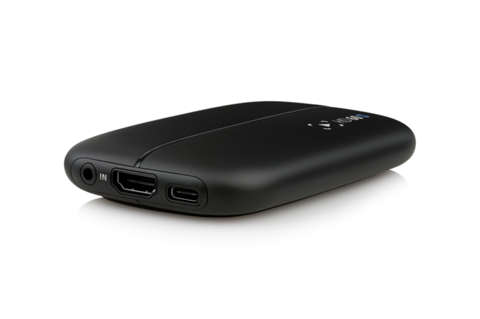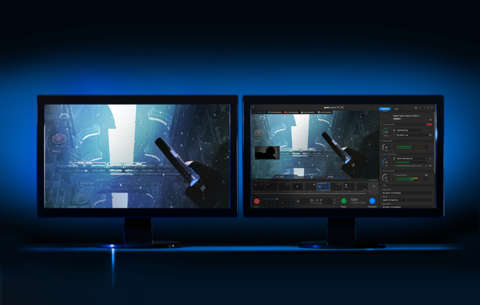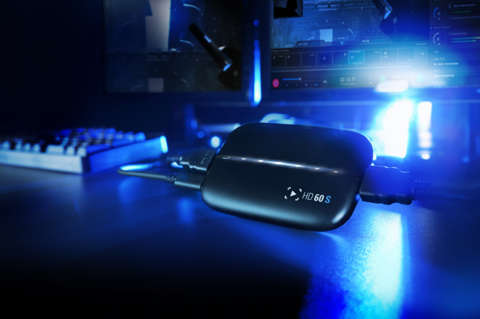Live streaming and recording footage of video games used to be a huge pain. You needed a powerful machine, compatible PCIe capture cards, video splitters, and the patience to tinker with a long list of settings and troubleshoot an even longer list of things that could go wrong. These days, capturing, sharing, and streaming what you’re playing is much easier-- in some instances, built into gaming ecosystems and accessible with the push of a button.
Elgato recently released a new version of their existing HD60 capture device, an easy-to-use external video capture card which does the majority of video processing on-board the unit, allowing users to easily capture high-quality footage from consoles or other PCs. The only major downside is that the footage lags as the data waits to be processed on your computer, and this doesn’t make for an ideal live streaming experience.
The upgraded version of the unit, the HD60 S, boasts USB 3.0 capability to eliminate that problem and allow video data to flow through faster, at the cost of relying more on the computer’s CPU to assist in the the video processing workload. On paper, this makes the already easy-to-use unit a even more ideal all-purpose tool for game capture and live streaming capabilities. But at USD 179.95 / EUR 189.95 / GBP 149.95 / AUD 279.95, who is it really suitable for? We took two perspectives: The video professional and the streaming enthusiast.

Edmond Tran, Editor/Senior Video Producer: Zorine, in my eight years at GameSpot I’ve captured and live streamed what feels like a million hours of video game footage and GameSpot staff playing said video game footage, I’ve had to use a variety of headache-inducing equipment to make all that happen. When the live streaming boom happened and all these consumer solutions started to enter the market, I was so damn relieved. Units were plug and play, had automatic resolution detection, and made recording game footage super easy. Presently, the Elgato HD60 is my go-to unit, although some of our other producers prefer Avermedia kits. You’ve been giving Elgato’s new HD60 S for a spin-- how do you find it?
Zorine Te, Editor: To start with, I liked how easy it was to set up. It was a process I was quite familiar with, having used the Elgato HD60 extensively. The HD60 S follows the exact same plug-and-play process: all I had to do was plug my PS4 into the unit, run a HDMI cable to my output to a screen, and make sure the USB cable was in a 3.0 slot. It's the same compact size as the HD 60, which made it super easy for me to transport.
While I usually use OBS, I wanted to give Elgato's native Game Capture software a whirl for streaming. It's quite simple to use, but I felt that it lacked the overlay options of other streaming programs like OBS or XSplit. While the Game Capture software had some neat scene-switching capabilities, the gameplay screen size is fixed at full screen, which meant I couldn't use my own custom overlay without it overlapping onto the game feed itself. This was rather annoying, because I prefer using my overlay to relay extra information to viewers without sacrificing any feed from the game screen.
I also encountered some other issues using the Game Capture Software to stream, such as downscaling my webcam feed excessively. The stream resolution is also locked to the bitrate you set; there is no entering separate values for the two. Compared to OBS, there is a lot less flexibility.
Edmond: Definitely, the Game Capture software is really easy to use if you’re just getting into live streaming, and it has some nice templates, but it’s definitely not as versatile as something like OBS if you’re a little more experienced and want a more customisable setup.
The downside with using the HD60 S with OBS is that I did notice there was slightly more lag in the video feed preview. Obviously, the biggest feature with the HD60 S is the USB 3.0 connection, which allows the video data to come through almost instantaneously--almost as if you were using an internal PCIe capture card.
I did some testing with Street Fighter V, a game that relies heavily on immediate input and reaction, and I could definitely feel the latency if played by solely watching the game feed through OBS. On the flip side, when I was using Elgato’s program, it felt way better, nearly 1:1. Obviously, if you want the game feed to be as lag free as possible, you’ll want to pass the signal through the capture card to another screen. But still, I feel like you could play and stream with real-time commentary while playing almost any other game fine just by watching your the feed in the software.

Zorine: Absolutely. When I used the Game Capture software, latency was not noticeable. I could play the game directly from the GC feed. However, when I ran it with OBS, it stuttered and lagged every few seconds. I would put it down to my CPU being not powerful enough (for reference, I run an Intel i5 4690K) but it was odd, as I didn't experience any stutter when using Elgato's Game Capture software.
Edmond: The low-latency feature is definitely much more reliant on your CPU to actually make it work, since it needs to process the all that high-def video data pouring in. I tested it on an Intel i7 3820, but it’s a shame that the OBS experience was so much worse for you.
In any case, if all you needed to do is record some good gameplay footage or do some basic live streaming, this thing is a great tool since it allows you to do so with just your console and a laptop--it takes out the need for an additional screen for image passthrough.
The thing is, if you’re someone in that situation it’s hard to argue against the idea of just using the built-in sharing features on the PlayStation 4 to stream and capture (even though the quality might be inferior), or use something like Nvidia’s Shadowplay software rather than forking out for this unit.
Zorine: I feel like the advantages are all in streaming and the ability to use other software to have a custom overlay and more quality control options for the feed. Stream layout is something that most, if not all, serious streamers should care about. If making videos about games is something you do often, then the HD60 S is a not just a solid investment--it's among the best of the best of capture equipment right now. For live streaming, users will need to make sure that their PCs can handle the feed, or use Elgato's own software like I did.
The other thing to consider is whether or not it's worth forking out for an upgrade over the Elgato's HD60. The differences between the two are hardly worth the massive price point if you're moving over from the previous model.

Edmond: The HD60 is also fine if you just want high-quality capture, but have an older computer or don’t need to take advantage of the lag-free capabilities. The HD60 S is at a price that requires some consideration. It’s at a level for enthusiasts who can’t install a PCIe card, or would prefer the options of an external card, who desire the flexibility of being able to use whatever program they were most comfortable with, and who ideally already have a strong PC setup that could handle the extra CPU demands.
For someone who needs to record gameplay footage every day, the HD60 S is definitely something that makes my job easier. What about you Zorine? Would you throw down $280 AUD, over half the cost of a PS4 console here, on a capture card like this?
Zorine: I'd really need to live stream a lot more to be able to justify the purchase. If you're looking to upgrade from the HD60, it's just not worth it. However, as an initial purchase, the HD60 S is a powerful capture unit that provides amazing quality capture of video games. If you want to use it to live stream, make sure you've got a solid PC build to back it up.
Got any questions about the unit, video capture, or live streaming? Ask them in the comments below!
